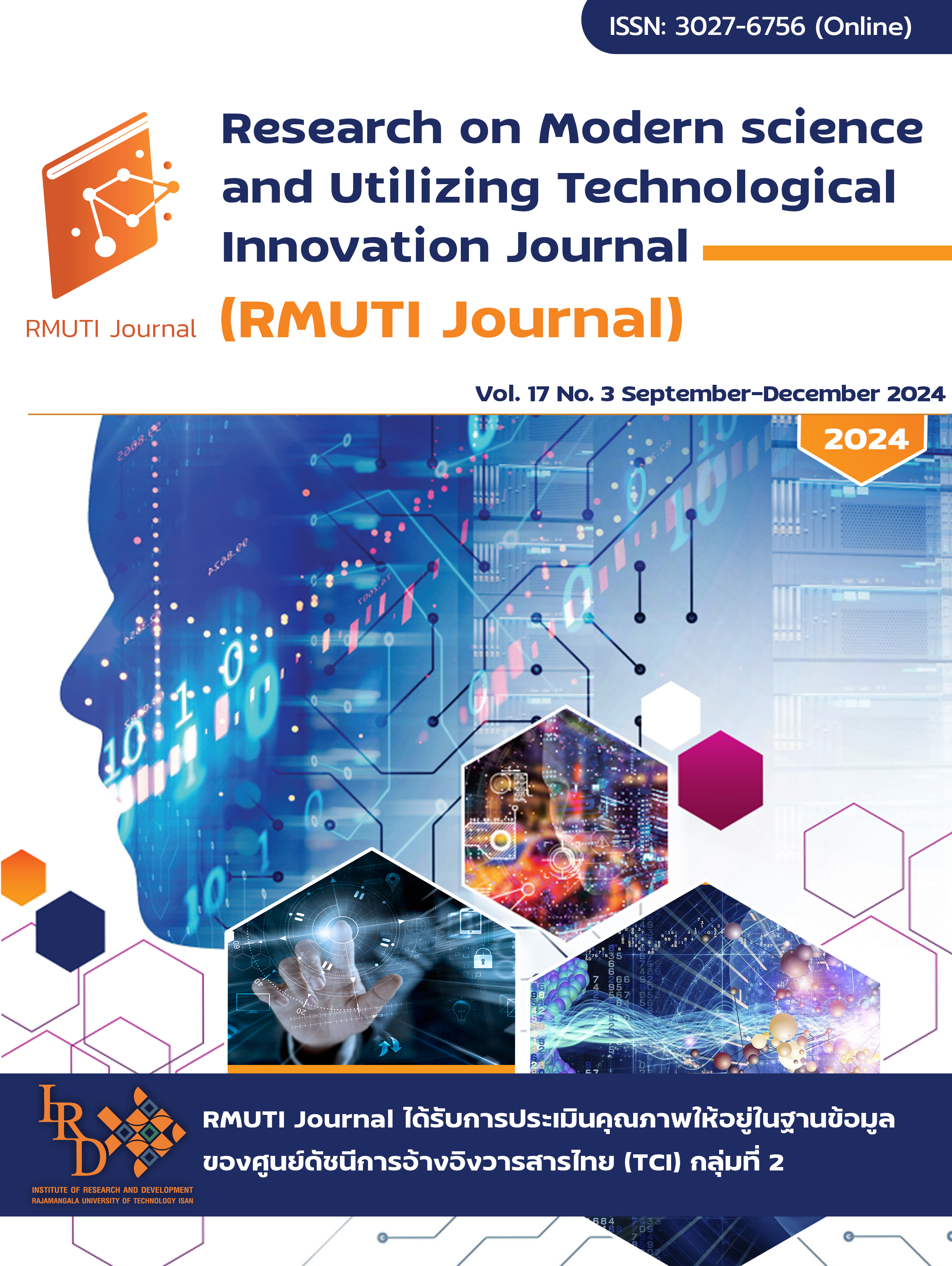การศึกษาความเหมาะสมของระยะลูกรีดเครื่องรีดแผ่นยางแบบ 4 ลูกรีด
Main Article Content
บทคัดย่อ
บทความนี้มีวัตถุประสงค์เพื่อศึกษาผลของระยะห่างของชุดขอนรีดดอกที่ 2 ของเครื่องรีดแผ่นยางพาราแบบ 4 ลูกรีด ต่อระยะเวลาในการรีดยางพาราแผ่นและเพื่อศึกษาประสิทธิภาพการทำงานของเครื่องรีดแผ่นยางพาราแบบ 4 ลูกรีด รวมถึงค่าพลังงานไฟฟ้าที่ใช้ในการรีด โดยดำเนินการทดลองตามรายละเอียดการปรับระยะห่างชุดขอนแต่ละขอนดังนี้ ชุดขอนรีดลื่นที่ 1 ตั้งระยะห่าง 4.5 มิลลิเมตร ชุดขอนรีดลื่นที่ 2 ตั้งระยะห่าง 3.0 มิลลิเมตร ชุดขอนรีดดอกที่ 1 ตั้งระยะห่าง 2.0 มิลลิเมตร ชุดขอนรีดดอกที่ 2 ตั้งระยะห่าง 3 ระดับ ได้แก่ 1.0 0.5 และ 0.1 มิลลิเมตร ผลการทดลองพบว่า เครื่องรีดแผ่นยางแบบ 4 ลูกรีด สามารถลดระยะเวลาในกระบวนการรีดแผ่นยางพาราจนถึงขั้นสุดท้ายในการรีดลงร้อยละ 82.40 ผลการเปรียบเทียบอัตราการผลิตต่อชั่วโมงพบว่า เครื่องรีดแผ่นยางแบบ 4 ลูกรีด มีอัตราการรีดยางสูงกว่าเครื่องรีดแบบดั้งเดิม โดยสามารถเพิ่มอัตราการผลิตเฉลี่ย 361.083 แผ่นต่อชั่วโมง มีค่าประหยัดพลังงานไฟฟ้าลดลงร้อยละ 58.126 และประสิทธิภาพของเครื่องรีดแผ่นยางแบบ 4 ลูกรีด ที่ปรับระยะห่าง 0.1 มิลลิเมตร มีขนาดความหนาของแผ่นยางพาราเฉลี่ยหลังรีดน้อยที่สุดเท่ากับ 2.14 มิลลิเมตร ได้ตามขนาดมาตรฐาน และประสิทธิภาพการรีดดีที่สุดร้อยละ 88.24
Article Details

อนุญาตภายใต้เงื่อนไข Creative Commons Attribution-NonCommercial-NoDerivatives 4.0 International License.
เอกสารอ้างอิง
Jongrungrot, V. (2015). Social Security of Rubber-based Agroforestry System Towards Strengthening Rural Communities in Southern Thailand. Journal of Community Development Research (Humanities and Social Sciences). Vol. 8, No. 2, pp. 8-15 (in Thai)
Siha, W. and Wongkaew, P. (2015). Feasibility Study for Investment in Machinery and Drying Plant for Processing Dried Rubber Sheet at Watcharapong Para-Rubber Plantation, Muang District, Loei Province. Research and Development Journal Loei Rajabhat University. Vol. 10, No. 33, pp. 18-26 (in Thai)
Bhowmick, A. K., Hall, M. M., and Benarey, H. A. (1994). Rubber Products Manufacturing Technology Book. ISBN 0-8247-9112-6.
Choosit, P. and Nilas, N. (2017). Development and Improvement of Rubber Press Machine with Wrought Pattern. Faculty of Industrial Education, Rajamangala University of Technology
Vijayaram, T. R. (2009). A Technical Review on Rubber. International Journal on Design and Manufacturing Technologies. Vol. 3, No. 1, DOI: 10.18000/ijodam.70043
Singmahachai, S., Thinaphim, A., and Botmatra, C. (2017). Rolling Rubber Machine. Vocational Education Innovation and Research Journal. Vol. 1, No. 1, pp. 9-18 (in Thai)
Panpan, C., Division, A., and Battalion, A. (2017). A Novel Design Approach of Fuzzy Logic Controller for Automatic Para Rubber Rolling Machine. SWU Engineering Journal. Vol. 12, No. 1, pp. 61-71 (in Thai)
Wongsangnoi, P. and Porchompoo, W. (2018). Design and Development Rubber Sheet Roll Machine. Faculty of Industrial Technology, Sakon Nakhon Rajabhat University
Research Institute Standards. (2015). Rubber Standards. Access (13 June 2024). Available (https://km.raot.co.th)
Recommendations for latex harvesting (2011). Rubber Authority of Thailand. Access (13 June 2024). Available (https://rubber.oie.go.th)


